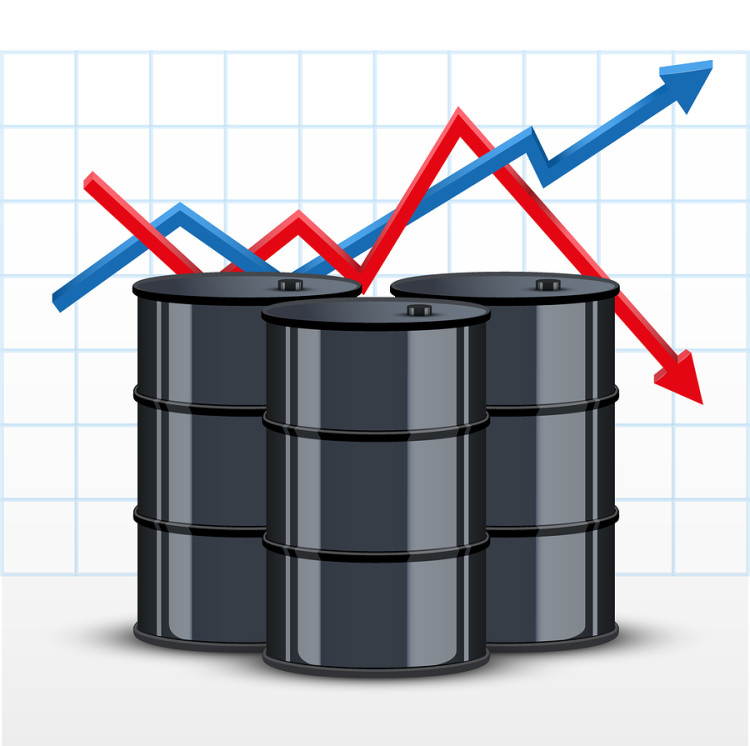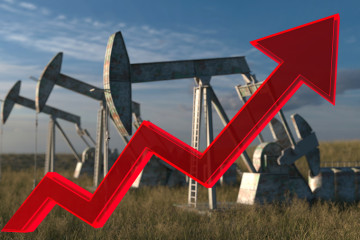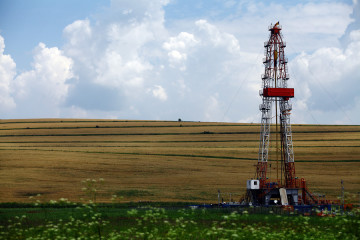The Daily Prophet: We’re All Oil Traders Now as Crude Sets Pace

published Mar 14th 2017, 3:30 pm, by Robert Burgess
(Bloomberg View) —
Once again, global markets were paced by oil. Crude slumped for a seventh straight day to trade below $48 a barrel at one point, dragged lower this time by reports that Saudi Arabia raised its production back above 10 million barrels a day. With the Federal Reserve widely expected to raise interest rates tomorrow, investors will be watching to see whether the central bank acknowledges the weakness in crude and its potential to reverberate through the global economy.OPEC’s largest producer, which had curbed supplies more than it needed in January as part of a deal to help rebalance world markets and reduce a global glut, told OPEC it boosted production by 263,300 barrels a day last month, a figure that jarred with the group’s own estimate that Saudi output fell further. Oil broke below $50 a barrel last week for the first time since December as rising U.S. inventories and output counteracted reductions as part of a deal by members of the Organization of Petroleum Exporting Countries and 11 other nations that started Jan. 1. The Saudi production increase comes as Energy Minister Khalid Al-Falih previously said the kingdom won’t indefinitely “bear the burden of free riders.”
Still, the country placed extra crude into storage at domestic refineries and terminals rather than sending it to international markets, according to a person familiar with policy. “Most of the news in the oil market has been bearish. You still have high inventories and shale production is going gangbusters,” Michael Lynch, president of Strategic Energy & Economic Research in Winchester, Massachusetts, told Bloomberg News’ Jessica Summers.
STOCKS FALTER
The drop in oil prices weighed on the shares of energy companies, which led a drop in global equities. The MSCI All Country World Index fell the most since Jan. 30, or 0.41 percent. The energy component of the benchmark declined 1.31 percent. The S&P 500 Index lost 0.34 percent. There are no shortage of critics warning about stock valuations. The latest is Nobel Prize-winning economist Robert Shiller, who says the last time he remembers equity investors being as bullish as they are now was in 2000, and that didn’t end well. Back then, he says, traders were captivated by a “new era story” of technological transformation based around the internet, according to Bloomberg News’ Jason Clenfield and Adam Haigh. Today, the game changer everyone’s buzzing about is political: Donald Trump and his bold plans to slash regulations, cut taxes and turbocharge economic growth with a trillion-dollar infrastructure boom. “They’re both revolutionary eras,” says Shiller, who’s famous for his warnings about the dot-com mania and housing-market excesses that led to the global financial crisis. “This time a ‘Great Leader’ has appeared. The idea is, everything is different.” On whether stocks are nearing a top, Shiller can’t say with any certainty. He’s loathe to make short-term forecasts.
BOND BOOST
Lower energy prices are also easing inflation concerns, giving a lift to the bond market. Yields on 10-year Treasuries fell for the second time in three days. Break even rates on five-year inflation-protected bonds, or the inflation rate that traders see over the life of the securities. Fell back below the important 2 percent level to the lowest in more than a month. That’s significant because it’s believed that rising inflation expectations are one key variable that allowed Fed policy makers in recent weeks to suggest that are ready to accelerate the pace of rate increase. “At our meeting later this month, the Committee will evaluate whether employment and inflation are continuing to evolve in line with our expectations, in which case a further adjustment of the federal funds rate would likely be appropriate,” Yellen said in the text of a speech on March 3 at the Executives’ Club of Chicago.
INDIA RALLIES
Indian equities rallied to a record and the rupee climbed the most since 2013 after Prime Minister Narendra Modi’s resounding victory in state elections boosted expectations for a continuation of his reform agenda. The NSE Nifty 50 Index climbed 1.7 percent to 9,087, crossing its March 2015 record close, as the market reopened after a holiday. The rupee rose 1.2 percent to 65.8175 per dollar, the strongest level since November 2015. Modi’s Bharatiya Janata Party won 312 seats in the 403-member assembly of Uttar Pradesh, according to the Election Commission of India, up from 47 in 2012. The results in India’s largest state were seen as a litmus test of Modi’s popularity and reforms, including opening up the country to more foreign investment and seeking to introduce a goods and services tax, ahead of general elections in 2019. “This win will give Modi the confidence to push ahead with more reforms and not pursue populist policies,” Sampath Reddy, chief investment officer at Bajaj Allianz Life Insurance Co., said by phone. The insurer, which oversees 480 billion rupees ($7.3 billion) of assets, is bullish on financial-services companies and metal producers, he said.
POUND POUNDED
Better late than never for sterling bears. The pound tumbled against all of its Group-of-10 peers, touching an eight-week low versus the dollar, after U.K. Prime Minister Theresa May was given the go-ahead to trigger Brexit. Sterling had a delayed reaction to the news, which came out late Monday in London and gives May the chance to formally kick off negotiations with the European Union. The selloff comes a day after Scottish First Minister Nicola Sturgeon signaled the start of a legal process for an independence referendum. The pound has now fallen about 19 percent versus the dollar since the June referendum. Sterling has also shown a propensity to drop after new developments in the Brexit process, even if, as is the case for Monday’s votes, they have been widely expected. “Now that Parliament have cleared the way for Theresa May to trigger Article 50, there is a real realization in the market that the U.K. government is right on the edge of potentially difficult negotiations with the EU regarding Brexit,” said Jane Foley, a senior currency strategist at Rabobank International in London. “This could unleash a whole new catalog of uncertainty about the U.K.’s future relationship with the EU many of which could be detrimental to investor confidence.”
TEA LEAVES
More important for markets than an actual increase in rates to a range of 0.75 percent to 1 percent will be what the Fed says about the likely path for rates from here. The so-called “dot plot,” which displays individual rate forecasts of officials on the policy-setting Federal Open Market Committee, will probably continue to show three hikes this year as appropriate, according to the median estimate. It was last updated in December and will cover projections out to 2019, plus an estimate for the longer run. Goldman Sachs Group Inc. strategists said in a research report that its expectations for tomorrow’s Fed hike are more hawkish than the consensus and current market pricing of just more than two additional hikes this year. The firm says the Fed needs to “lean into the wind” of rising inflation, strong growth, robust sentiment, easy financial conditions, and the likelihood of fiscal stimulus in 2018.
Robert Burgess is editor of Bloomberg Prophets.
To contact the author of this story: Robert Burgess at bburgess@bloomberg.net To contact the editor responsible for this story: Max Berley at mberley@bloomberg.net
For more columns from Bloomberg View, visit Bloomberg view
COPYRIGHT © 2017 Bloomberg L.P







No Comment